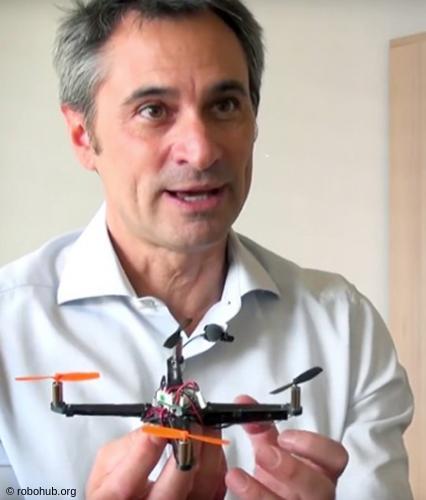Science, Technology, and Future of Small Autonomous Drones
We are witnessing the advent of a new era of robots — drones — that can autonomously fly in natural and man-made environments. These robots, often associated with defense applications, could have a major impact on civilian tasks, including transportation, communication, agriculture, disaster mitigation and environment preservation. Autonomous flight in confined spaces presents great scientific and technical challenges owing to the energetic cost of staying airborne and to the perceptual intelligence required to negotiate complex environments. Here I will describe scientific and technological advances that are expected to translate, within appropriate regulatory frameworks, into pervasive use of autonomous drones for civilian applications. I will also give an overview of strategic research and innovation activities in mobile and wearable robots that are carried out in Switzerland within the Swiss National Center of Competence in Robotics (NCCR Robotics). Hosted at EPF Lausanne and co-directed by ETH Zurich, the NCCR funds cooperative research between more than 20 top robotics labs in Switzerland with federal funding for up to 12 years.
This is an updated and expanded version of Floreano and Wood (2015), Science, Technology, and Future of Small Autonomous Drones, Nature, 460(521), 460-466.

a, Fixed-wing drones with a long flight time could provide bird's-eye-view images and a communication network for rescuers on the ground. b, Rotorcrafts with hovering capabilities could inspect structures for cracks and leaks; and c, transport medical supplies from nearby hospitals. d, Swarms of dispensable drones with flapping wings could enter buildings to search for chemical hazards. e, Multi-modal caged robots could fly and roll into complex structures to safely search for signs of life. (Reprinted by permission from Macmillan Publishers Ltd: Nature 460(521), 460-466, copyright (2015).)
Prof. Dario Floreano, EPFL, Switzerland

Prof. Dario Floreano is director of the Laboratory of Intelligent Systems at the Swiss Federal Institute of Technology Lausanne (EPFL). He is also founder and director of the Swiss National Center of Competence in Robotics. Prof. Floreano holds an M.A. in visual psychophysics, an M.S. in Neural Computation, and a PhD in Robotics. He held research positions at Sony, at Caltech/JPL, and at Harvard University. He is interested in robotics and A.I. at the convergence of biology and engineering. His research activities include aerial robotics, soft robotics, and evolutionary robotics. He published more than 350 articles, several patents, and 4 books on Artificial Neural Networks, Evolutionary Robotics, Bio-inspired Artificial Intelligence, and Bio-inspired Flying Robots with MIT Press and Springer Verlag. He is on the Advisory Board of Future and Emergent Technologies of the European Commission, has been a founding member of the World Economic Forum Council on robotics and smart devices, co-founder of the International Society of Artificial Life, Inc., and executive board member of the International Society for Neural Networks. He spun off two successful companies in drones (senseFly and Flyability) and a non-for-profit platform for public awareness of robotics and A.I. (RoboHub).